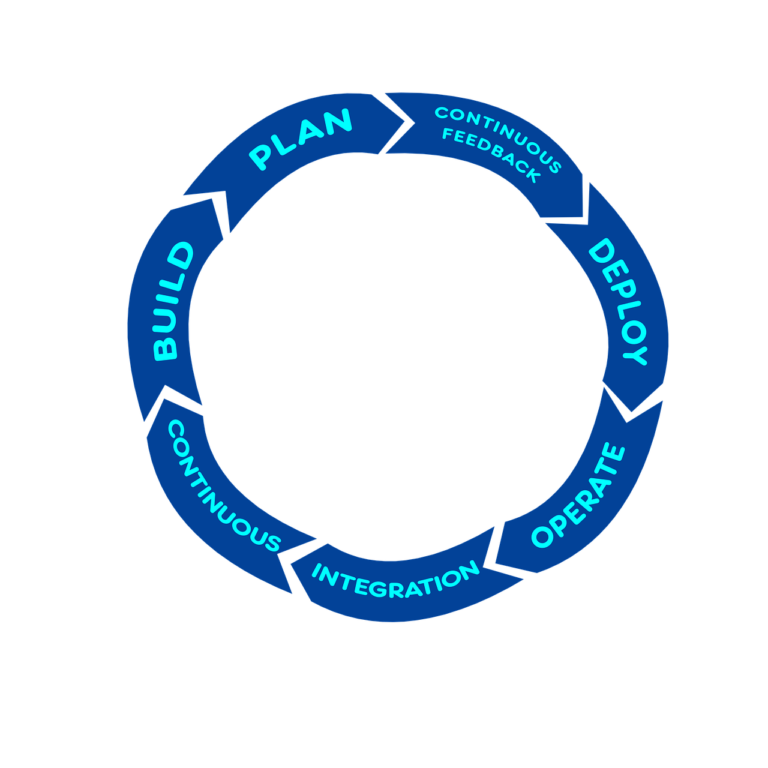How Can I Track The Effectiveness Of My Social Media Campaigns?
Tracking the effectiveness of your social media campaigns can be a daunting task, but it’s crucial to ensure that your efforts are paying off. In this article, you will discover practical tips and strategies to measure the success of your social media campaigns. From analyzing engagement metrics to utilizing analytics tools, you will gain valuable insights that will allow you to optimize your campaigns and achieve your marketing goals. So, let’s dive in and uncover the secrets to tracking the effectiveness of your social media campaigns!

Setting Goals and Objectives
Defining campaign goals
When embarking on a social media campaign, it is crucial to start by clearly defining your goals. Think about what you hope to achieve through your campaign. Are you looking to increase brand awareness, drive traffic to your website, generate leads, or boost sales? By defining your goals, you can align your strategies and tactics accordingly, ensuring that every step you take is in line with your ultimate objectives.
Establishing specific objectives
Once you have defined your campaign goals, it is important to break them down into specific objectives. Specific objectives help you outline the key outcomes you want to achieve within a particular timeframe. For example, if your goal is to boost sales, your objectives might include increasing website traffic by a certain percentage, expanding your email subscriber list, or improving the conversion rate on your landing page. These specific objectives will guide your efforts and allow you to measure your progress accurately.
Selecting Key Performance Indicators (KPIs)
Identifying relevant metrics
To effectively track the effectiveness of your social media campaigns, you need to identify the metrics that are most relevant to your objectives. For example, if your goal is to increase brand awareness, metrics such as reach, impressions, and engagement might be important to monitor. If your objective is to generate leads, metrics like click-through rates and conversions would be more significant. By identifying the relevant metrics for your goals, you can focus on tracking and analyzing the data that will provide you with valuable insights.
Choosing appropriate KPIs
Once you have identified the relevant metrics, it’s time to select the appropriate Key Performance Indicators (KPIs) to track. KPIs are specific measurements that indicate the success or failure of your campaigns. For instance, if your objective is to drive website traffic, KPIs such as website visits, page views, and bounce rate would be appropriate to monitor. Selecting the right KPIs allows you to measure and evaluate your progress accurately, giving you a clear understanding of how your social media campaigns are performing.
Implementing Conversion Tracking
Setting up conversion tracking tools
Tracking conversions is crucial for measuring the effectiveness of your social media campaigns. Conversion tracking tools, such as Facebook Pixel or Google Analytics, enable you to monitor the actions users take after clicking on your social media posts or ads. By setting up these tools correctly, you can track important actions like purchases, form submissions, or downloads. This data helps you understand the impact of your campaigns on lead generation and revenue generation and provides insights into the quality of your traffic and audience engagement.
Using custom URLs and UTM parameters
In addition to conversion tracking tools, you can further enhance your tracking capabilities by using custom URLs and UTM parameters. Custom URLs are unique website addresses that allow you to attribute traffic to specific campaigns or sources easily. UTM parameters are tags appended to the end of a URL, providing additional tracking information. By using custom URLs and UTM parameters, you can precisely track the performance of individual social media posts or ads, identifying which platforms, campaigns, or even specific content pieces are driving the most conversions.
Using Analytics Platforms
Leveraging social media analytics
Most social media platforms provide built-in analytics tools that offer valuable insights into the performance of your campaigns. These analytics platforms allow you to track key metrics like reach, impressions, engagement, click-through rates, and conversions directly within the platform. Additionally, they provide demographic information about your audience, helping you understand who is engaging with your content. By leveraging social media analytics, you can gain a deeper understanding of how your campaigns are resonating with your target audience and make data-driven decisions to optimize your strategies.
Utilizing website analytics
In addition to social media analytics, it is crucial to utilize website analytics platforms like Google Analytics to get a holistic view of your campaign’s effectiveness. Website analytics provide detailed data on website traffic, user behavior, conversion rates, and more. By linking your social media campaigns to your website analytics, you can track the flow of traffic from social media platforms to your website, measure the effectiveness of landing pages and conversion funnels, and identify areas for improvement. By analyzing website analytics alongside social media analytics, you can gain comprehensive insights into the overall impact of your campaigns.

Analyzing Reach and Engagement
Measuring reach and impressions
Reach and impressions are essential metrics for evaluating the visibility of your social media campaigns. Reach refers to the number of unique users who have seen your content, while impressions represent the total number of times your content has been displayed. Monitoring these metrics helps you understand the potential audience size and the overall exposure of your campaigns. By regularly tracking reach and impressions, you can identify trends, measure the impact of different content types, and adjust your strategies to maximize the visibility of your campaigns.
Monitoring engagement metrics
Engagement metrics provide insights into how your audience is interacting with your social media content. Key engagement metrics include likes, comments, shares, and saves. By monitoring these metrics, you can gauge the level of interest and resonance your content is generating. High engagement indicates that your audience finds value in your content and is more likely to take further actions, such as visiting your website or making a purchase. Monitoring and analyzing engagement metrics allow you to refine your content strategy and create more impactful campaigns.
Monitoring Click-Through Rates (CTR)
Calculating CTR for social media posts
Click-through rate (CTR) measures the percentage of users who clicked on a link or call-to-action in your social media posts. It indicates the effectiveness of your content in generating interest and compelling users to take action. To calculate CTR for social media posts, divide the number of clicks by the number of impressions and multiply by 100. Monitoring CTR helps you identify which posts are driving the most traffic to your website or landing page. By analyzing the factors that contribute to higher CTRs, such as the use of compelling headlines or visual elements, you can optimize your content to increase click-through rates.
Analyzing CTR for paid ads
CTR is especially significant when it comes to analyzing the performance of paid social media ads. It indicates the relevance and effectiveness of your ad copy, visuals, targeting, and overall campaign strategy. A higher CTR implies that your ads are successfully capturing the attention of your target audience and motivating them to click through to your desired destination. By analyzing the CTR of your paid ads, you can make informed decisions about ad optimization, budget allocation, and audience targeting, maximizing the return on your advertising investment.

Measuring Conversion Rates
Tracking conversions from social media
Conversion rates provide insights into the effectiveness of your social media campaigns in driving desired actions, such as purchases, sign-ups, or downloads. To measure conversion rates from social media, divide the number of conversions by the number of clicks on your social media posts or ads and multiply by 100. Tracking conversion rates allows you to assess the quality of your traffic and audience engagement. By monitoring conversion rates over time, you can identify trends, optimize landing pages and conversion funnels, and refine your social media campaigns to increase conversion rates.
Attributing revenue to campaigns
To measure the impact of your social media campaigns on revenue generation, it is important to attribute revenue to specific campaigns accurately. By utilizing conversion tracking tools and integrating them with your CRM or e-commerce platform, you can track the revenue generated from each campaign. This information allows you to determine the return on investment (ROI) of your social media efforts and make data-driven decisions regarding campaign optimization, budget allocation, and resource allocation.
Assessing Return on Investment (ROI)
Calculating ROI for social media campaigns
ROI measures the profitability of your social media campaigns by comparing the revenue generated to the cost invested in running the campaigns. To calculate ROI, subtract the cost of the campaign from the revenue generated, divide the result by the cost, and multiply by 100. A positive ROI indicates that your social media campaigns are generating more revenue than they cost, while a negative ROI suggests the need for adjustments or optimizations. Calculating ROI helps you evaluate the effectiveness and efficiency of your social media campaigns and make informed decisions about resource allocation and strategy adjustments.
Determining cost per acquisition (CPA)
Cost per acquisition (CPA) is a metric that measures the cost required to acquire a new customer or obtain a desired action, such as a lead or a sale. To determine CPA, divide the total cost of the campaign by the number of acquisitions (e.g., new customers) generated. Tracking CPA helps you understand the cost-effectiveness of your social media campaigns and compare it to other marketing channels. By optimizing campaigns to lower CPA, you can ensure cost efficiency and maximize your return on investment.

A/B Testing and Experimentation
Testing different campaign elements
A/B testing, also known as split testing, allows you to experiment with different campaign elements to determine what works best for your audience. By creating multiple versions of your social media posts or ads and testing them simultaneously, you can identify the most effective variations. Elements to test might include headlines, images, call-to-action buttons, ad copy, or even targeting criteria. A/B testing helps you make data-driven decisions based on actual performance, improving engagement, click-through rates, and conversions over time.
Optimizing based on data-driven insights
Once you have conducted A/B tests and gathered data-driven insights, it is crucial to optimize your social media campaigns based on those findings. Analyze the results of your tests and identify trends or patterns that indicate what resonates best with your audience. Implement the most successful variations and continue testing new ideas to continually improve campaign performance. By leveraging data-driven insights, you can refine your social media strategies, enhance audience engagement, and achieve better campaign outcomes.
Regular Reporting and Analysis
Creating comprehensive reports
Regular reporting and analysis are essential for tracking the effectiveness of your social media campaigns over time. Create comprehensive reports that include key metrics, KPIs, and performance trends, allowing you to monitor progress and identify areas for improvement. Include qualitative analysis as well, capturing insights from your audience interactions or feedback. Comprehensive reports provide a holistic view of your campaigns, enable data-driven decision-making, and foster a continuous learning and improvement mindset.
Reviewing and adjusting campaign strategies
Regularly reviewing the performance of your social media campaigns and analyzing the results of your tracking and reporting efforts helps you identify what is working well and what needs adjustment. Identify any gaps or areas for improvement and make informed decisions about adjusting your campaign strategies. Adapt to changes in audience behavior, social media algorithms, or industry trends. By continuously reviewing and adjusting your campaign strategies, you can optimize your social media efforts, maximize effectiveness, and achieve your goals and objectives.
By following these steps and expanding your understanding of tracking the effectiveness of your social media campaigns, you can gain valuable insights into your audience’s preferences, optimize your strategies, and drive better results. Remember, tracking and analyzing the right metrics and KPIs, testing and experimenting, and regularly reporting and adjusting your strategies, all play a vital role in monitoring and improving the effectiveness of your social media campaigns.






